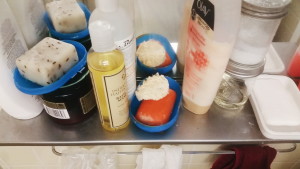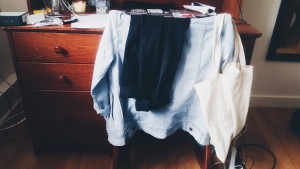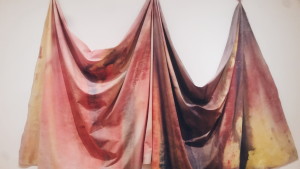& made herself a bath — Shange evoking and transforming the mundane
What continuously strikes me about Shange’s work is her ability to invoke a world of magic composed of whispers, rituals, dances, objects and practices of the everyday. In for colored girls elements of the everyday take on a new life in what they come to represent.
One’s plant is one’s relationship– tended to, watered, and cared for until burdensome:
“this note is attached to a plant
i’ve been watering since the day i met you
you may water it
yr damn self” (14)
In the wee hours of the morning a woman can soak and soak in a bath until she is transformed:
“at 4:30 AM
she rose
movin the arms & legs that trapped her
she sighed affirmin the sculptured man
& made herself a bath
of dark musk oil egyptian crystals
& florida water to remove his smell
to wash away the glitter
to watch the butterflies melt into
suds & the rhinestones fall beneath
her buttocks like smooth pebbles
in a missouri creek
layin in water
she became herself
ordinary
brown braided woman
with big legs & full lips
reglar” (34)
A woman’s stockings, the glare from street lights, or the last bit of whiskey in the glass are ritual and transformative experiences– yes, coded with Shange’s specific meaning of a time, place, or feeling but mundane enough to evoke entirely different perceptions in those who read her words. In my own work as an artist and photographer, I am inspired by the mundane– my current interest is in the realm of domesticity and the tensions that exist in one’s home space as a place of contrived vulnerability. I return to the above passages over and over again. I’m reminded that the items that are carefully placed on one’s dresser, bathroom sink, or bedside table can be ingredients to a kind of potions or spell. Pictures, lotions, plants, pieces of cloth, stacks of magazines, and tubes of lipstick that induce sleep, soothe an anxious heart, remind you of Spring, and allow you to transform before your own eyes.
photos taken by Kiani Ned






Comments ( 2 )